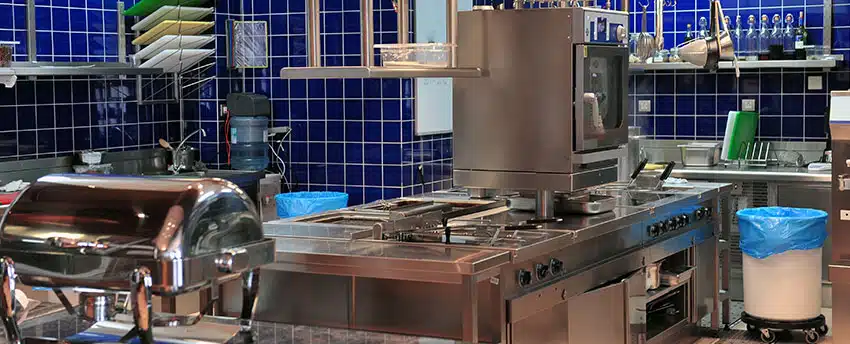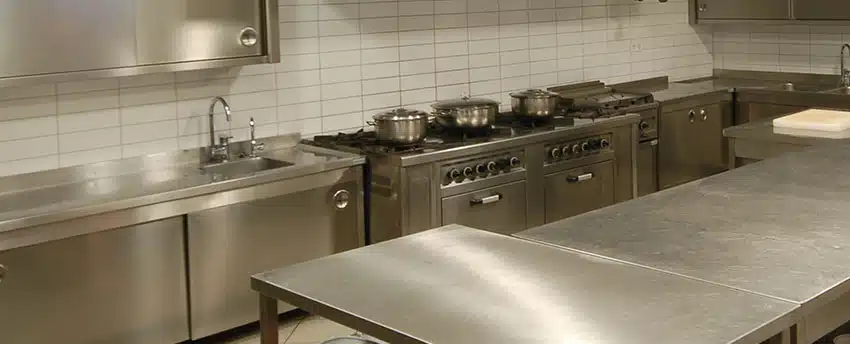Mar
Solved: Commercial Dishwasher Leaking Water
- 2024
- AirExpress
- To Write First
A leaking commercial dishwasher can make things difficult. Even though it will still work and clean dishes, there will be water everywhere to deal with. So, you must look for ways to fix this problem or consult a commercial appliances repair technician. Here are some ways you can detect the cause and fix a leaking commercial dishwasher.
Fixing A Leaking Commercial Dishwasher
Is The Dish Rack Present?
The dish rack may seem like a forgettable aspect of dishwashing, but it’s an important one. If the dish rack is not in its place or is absent, the unit may leak water because of drainage problems and others. So, keep the dishes on the dish rack and then place the dish rack on the dishwasher for cleaning without leaks.
Check The Door
Any issue with the door will lead to a leaking problem. Therefore, if there is a leak, you should check the door.
You should try to close the door and see if it closes properly. If it seems that it was properly closed, check its gaskets. Because even when the door feels closed, worn gaskets can allow water to leak from the dishwasher during the wash cycle.
Moreover, if the door is not closing, then you should adjust the door. You should check if anything is in the way of the door like the dish rack. If nothing is stopping the door from closing, you should consult an expert.
Keep in mind that, sometimes, a leaking issue is just a human error. Maybe someone didn’t close the door properly which led to a leak. So, instruct the staff members responsible for handling the dishwasher to make sure the door is closed before starting a wash cycle.
Clean The Wash Arm Of The Dishwasher
In some cases, the issue of leakage is due to a wash arm, also called a rinse arm, not rotating. Water might accumulate in one part of the unit and lead to a leak. The solution to this problem is to clean the wash arm because it usually stops rotating when food particles and dirt build up on it.
To clean the rinse arm, you have to remove it from the dishwasher first. For that, you can use pliers. Clean the spray arm with warm water and dishwasher soap or any other cleaner you use for cleaning the dishwasher. After cleaning, fix it back into its position. Run the machine to check if the problem is fixed or still there.
Replace The Spray Arm
The spray arm or wash arm is what sprays the water. It’s done with the small holes in the spray arm that spray liquid on the dishes. If the spray arm bursts, there may become a bigger opening for much more water to be released than required. This will cause the dishwasher to overflow with water and leak from any side of the unit.
To check the spray arm, you will need to remove it. Once removed, check the small holes. If some appear bigger or cracked, the spray arm is burst and must be replaced.
Many experts recommend that if you notice your commercial dishwasher leaking, you should replace the spray arm even if it appears fine. But we know. You would not want to replace the spray arm if it’s okay. So, the best course of action should be to have the unit inspected by a professional who can check everything and then carry out repairs or replacements.
Check And Clean The Filter
The filter placed at the bottom of the interior of the dishwasher is to stop anything other than water and liquids from draining. Over time, the filter becomes so clogged that even liquid can get through or does get through but at a very slow pace. When this happens, the unit overflows with water that starts leaking from some place like the sides of the dishwasher.
This is why you must clean the filter regularly to prevent this problem. Moreover, you should also clean the area where the filter is placed because it gathers a lot of gunk as well.
Inspect The Drain
If the drain where the water from the dishwasher goes is clogged, water won’t have anywhere to go so it might start leaking from weird places. So, check the drain and unclog it. There are various ways of unclogging a drain like using a plunger, pouring hot water, using store-bought solutions, and using a drain snake. However, if the drain doesn’t unclog, consult a plumber.
Check The Drain Pipe Of The Dishwasher
Water goes through the drain pipe to the drain so if there is any damage there, water will leak from the pipe. The drain pipe is not visible and to see it, you have to open the cover that’s usually at the lower side of the dishwasher. Do this after powering off the unit.
Once you remove the cover, check the drain pipe that must be connected to the roof of the compartment you’re seeing. If it’s not connected to that or appears damaged, then that’s the cause of the leak. Sometimes, the drain pipe or any other part is worn and must be replaced.
This must be fixed by a commercial dishwasher expert to make sure that the drain pipe is sealed properly. Keep in mind that, in some cases, the drain pipe may appear fine, but it may leak water due to a broken seal. This is why this must be inspected and repaired by a licensed professional.
Check The Float Switch
The float switch keeps the water levels in the dishwasher in check. If it becomes faulty, the water will rise above the required levels because the float switch won’t signal the control board to turn off the water inflow. Due to this, the dishwasher may leak water.
A faulty float switch or float assembly must be replaced. It’s the job of an appliance repair expert.
Replace The Dishwasher
This is not a fix for a leaking dishwasher. This only shows that the dishwasher is old enough to be replaced. Why?
Because dishwashers experience wear and tear over time. They are exposed to moisture so they develop rust and corrode slowly even though they are made of corrosion-resistant materials. If an internal part of the dishwasher corrodes, there may come a time when it will allow water to leak.
Corrosion leaks in commercial dishwashers are usually not repairable. However, you should still get an opinion from an expert. If not repairable, your only option would be to replace the unit. If you used your commercial dishwasher for 10-15 years, you did well and a replacement should not be a surprise.
Conclusion
Commercial dishwasher leakage is an annoying issue because your dishwasher may work, but it will leak water and create a mess. So, you must check the dish rack and the door first thing. Then, check other parts like the spray arm and the filter. Some leaks are due to a clogged filter or drain pipe, so clean your dishwasher regularly. This will also reduce limescale buildup that can corrode important components. Most importantly, if an issue arises, you should consult a commercial dishwasher repairs Springfield expert for advice and repairs.



